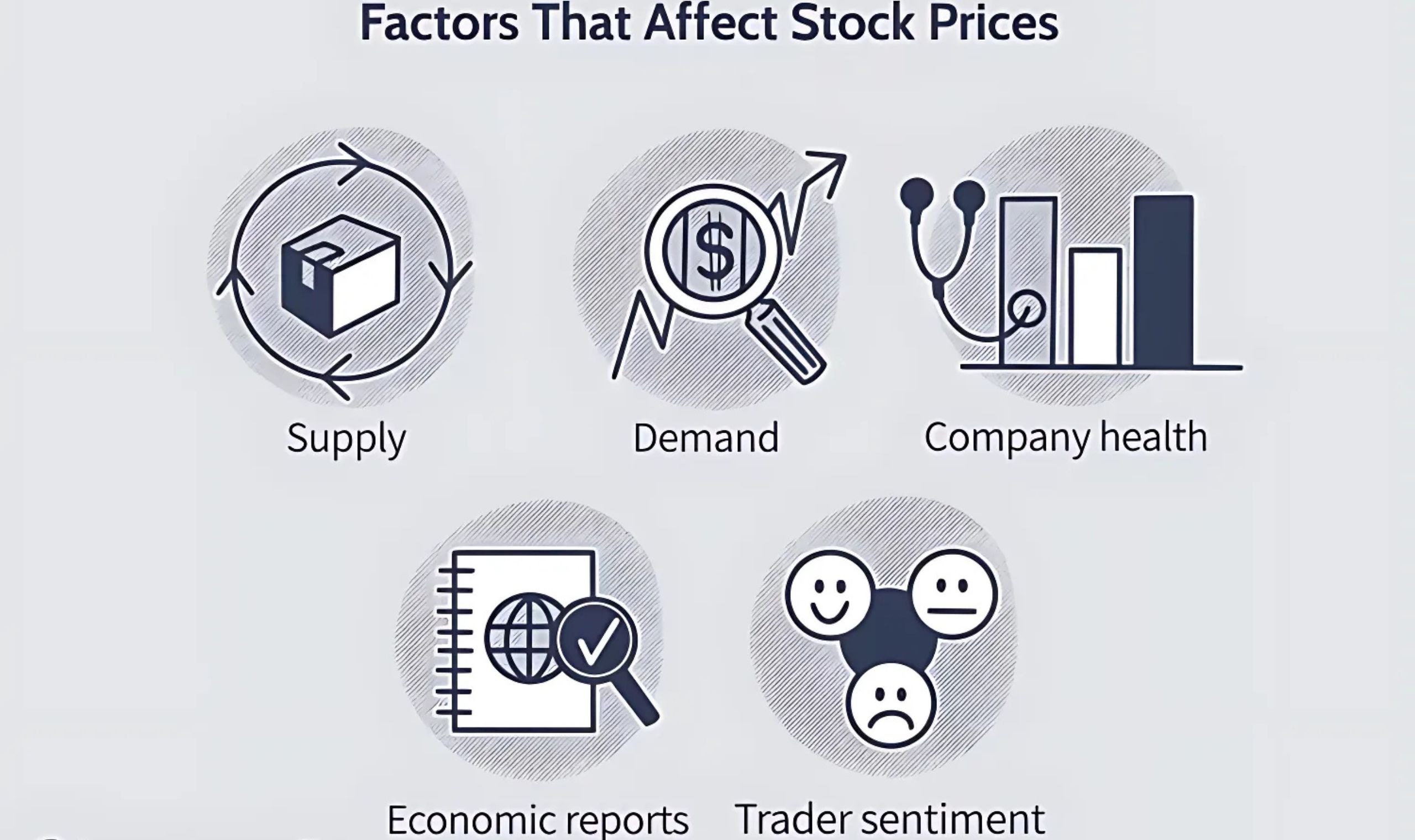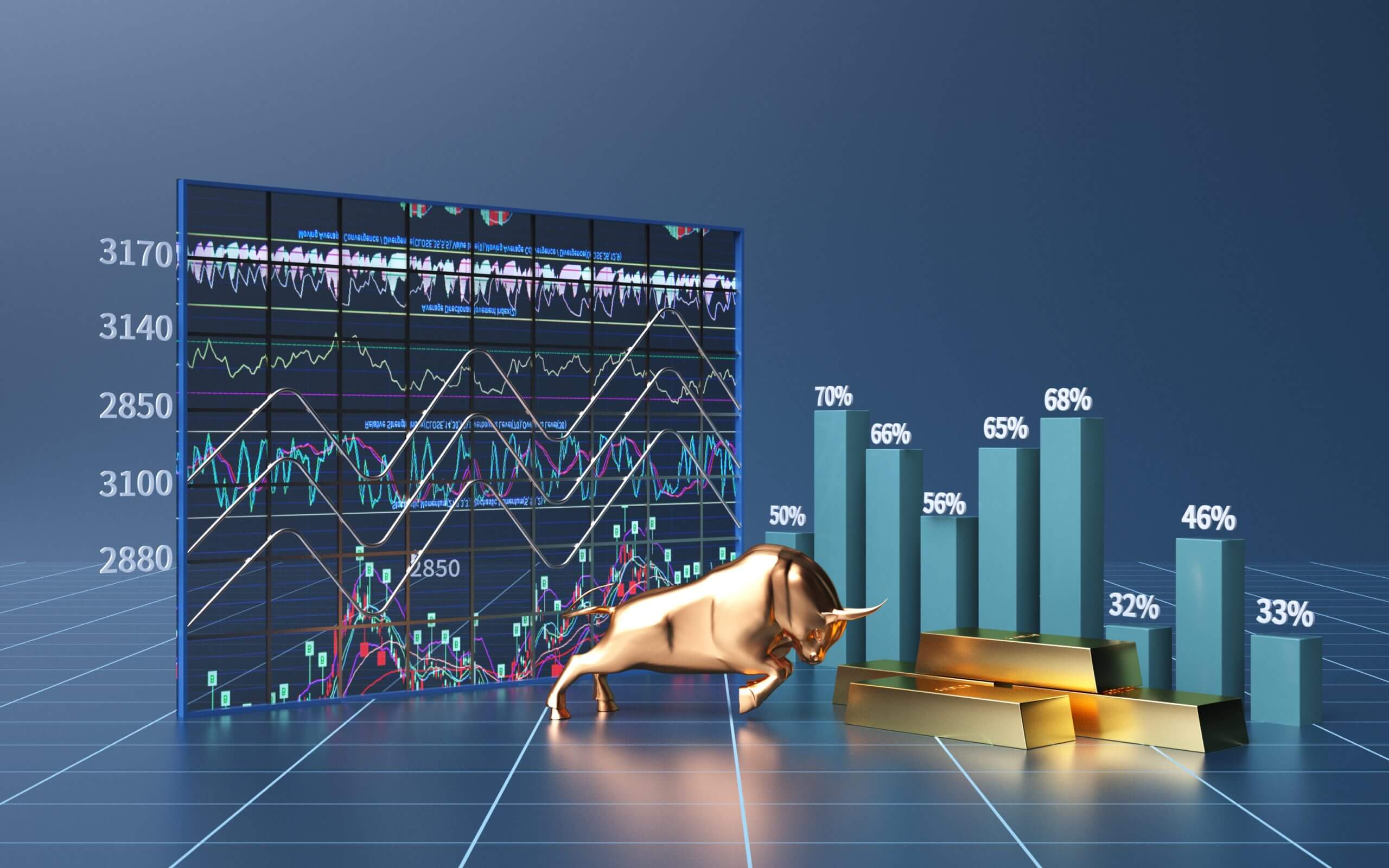Stock prices change day in and day out; they reflect the constantly changing dynamics of the market. The decision on how to best invest or be cautious about investing in stocks can depend on many aspects. The dynamics of stock price movements can be categorized into three main groups-namely, fundamental factors, technical factors, and market sentiment-although there is no precise formula to forecast how a specific stock will behave.
Fundamentals: The Bottom Line Forces That Move Stocks
Fundamentals are strongly associated with a company’s financial health and its performance in the operational function. These are the foundation of stock price valuation in an efficient market, including factors such as earnings, profitability, and a business’s future growth potential.
1. Earnings Base
Earnings base is often expressed as Earnings Per Share or EPS, which represents that profit share of a company distributed to every issued share. Therefore, EPS measures the amount return one can expect from an investment in the company. Purchasing a stock is essentially buying a fractional interest in future earnings of the company, making the EPS calculation very significant.
Besides EPS, some other indicators of earnings power are:
- Free Cash Flow Per Share:
A cash-based metric often considered a better measure of profitability.
- Funds From Operations (FFO):
Applied in industries such as REITs to determine financial soundness.
Dividends Per Share: Points to the income obtained by the shareholders, which is particularly crucial for mature companies and dividend-paying companies.
2. Expected Earnings Growth:
- Stocks with higher growth potential typically command higher multiples.
Discount Rate: - Reflected in inflation, interest rates, and perceived risks, discounting the present value of future earnings.
For example,
The greater the perceived risk, the higher is discount rate, and therefore the multiples become relatively lower.
Higher inflation reduces the value of future earnings; thus, multiples decrease.
3. Fundamental Factors
- Earnings Base:
EPS, cash per share, or dividends, etc.
- Growth Expectations:
Expected growth in earnings.
- Discount Rate:
Inflation and Risk.
- Risk Perception:
Confidence in the stability and prospects for expansion of the company.
- Technical Factors:
The External Influences
As fundamentals represent the base and substance of stock pricing, technical factors refer to the external influences forming part of the market. These factors are most often related to macroeconomic factors, industry norms, and the behavior of investors.
4. Inflation
A two-edge sword:
- Low Inflation:
Historically has been associated with higher stock valuations since, basically, good economic conditions prevail.
- High Inflation:
Decreases buying power and lowers valuation multiples.
- Deflation:
Typically adverse to equities, as it means low pricing power and demand.
5. Economic Strength
The performance of a stock usually reflects:
- Market-wide Trends:
Stocks move with general markets.
- Industry Group members:
Sentiment within certain sectors or industries influences the performance of individual stocks. When a company in the tech sector suffers a setback, for instance, it can spill over to its peers.
- Alternatives
Investment money is allocated over asset classes like bonds, commodities, real estate, and equities. Alternatives including government bonds that yield well can cause demand for equities to decline.
6. Incidental Transactions
Some trades occur for reasons other than a stock’s intrinsic value
- Insider Trading:
Executives selling shares to meet their personal portfolio requirements
- Hedging:
Institutions buying or shorting stocks to hedge risk in other investments
7. Demographics
Investor demographics affect the demand for equities
- Middle-aged Investors:
Invest more, thus increasing the demand for equities and driving up valuations.
- Retirees:
Withdraw investments, thereby reducing market liquidity.
8. Trends
Stocks can follow short-run trends:
- Momentum:
Winning stocks attract more investors, so it creates more profit.
- Mean Reversion:
Stocks revert to their historical average valuations.
9. Liquidity
Liquidity refers to how easy a stock can be bought or sold. Stocks from the huge large-cap businesses respond fast to news and attract high levels of trading activity. Small-cap stocks generally suffer from a “liquidity discount” because fewer investors are interested in them.
10. News
Company-specific and macroeconomic news is disproportionately influential in stock prices. Earnings Reports: Positive news generally lifts the price; adverse surprises lower it.
- Global Events:
Political tensions, trade agreements, or economic crises affect investor sentiment worldwide.
- Market Sentiment:
The Psychological Element
Market sentiment reflects the aggregate feelings and views of investors. Sentiment is often subjective, opposed to fundamentals or technicals, reflecting biases and irrational behaviors.
11. Behavioral Finance
Behavioral finance delves into how psychological elements drive market decisions:
- Loss Aversion:
Investors fear losses more than they value equivalent gains.
- Herd Mentality:
Following the crowd, even when it contradicts logic.
- Overconfidence:
Overestimating one’s ability to predict market movements.
The Role of Sentiment
Sentiment can drive stock prices away from fundamental values in the short term. For example:
A company might deliver stellar earnings, but negative sentiment due to broader market fears can suppress its stock price.
Conversely, excessive optimism can inflate stock prices beyond realistic valuations.
Market Psychology and Social Science
The integration of social sciences in finance has deepened our understanding of market sentiment. Behavioral finance, legitimized by Nobel laureates like Daniel Kahneman, provides frameworks to analyze what may appear to be irrational market behaviors.
How These Forces Interact
The comingling of fundamental, technical, and sentiment-driven factors constitutes the dynamic stock market environment we have today:
Fundamentals anchor stock prices over the long term.
Technical factors drive short-term fluctuations because they influence supply and demand.
The market forces can magnify or cancel out these effects and create temporary mispricings.
Adjustment in Investment Strategies
Different types of investors weigh the above forces differently:
a. Short-term Traders:
Focus on technical factors and sentiments to capitalize on trends and momentum.
b. Long-term Investors:
Rely more on the fundamentals, believing that intrinsic value will prevail with time. Understanding these forces enables an investor better to navigate complexities in the markets, such that investment strategies are aligned with either investment horizon and risk tolerance.
Conclusion: Interpreting the Market’s Pulse
The stock market is like an intricate, complicated ecosystem that has its roots in many drivers. As much as fundamentals offer a base for valuation, technical factors and market emotions constitute the dynamic flow of stock trading. Observing and studying these forces aid investors in making better-informed choices and reacting to constantly shifting market conditions. Regardless of whether you are a short-term trader or a long-term investor, understanding what moves stock prices is the first step toward achieving financial success.















0 Comments